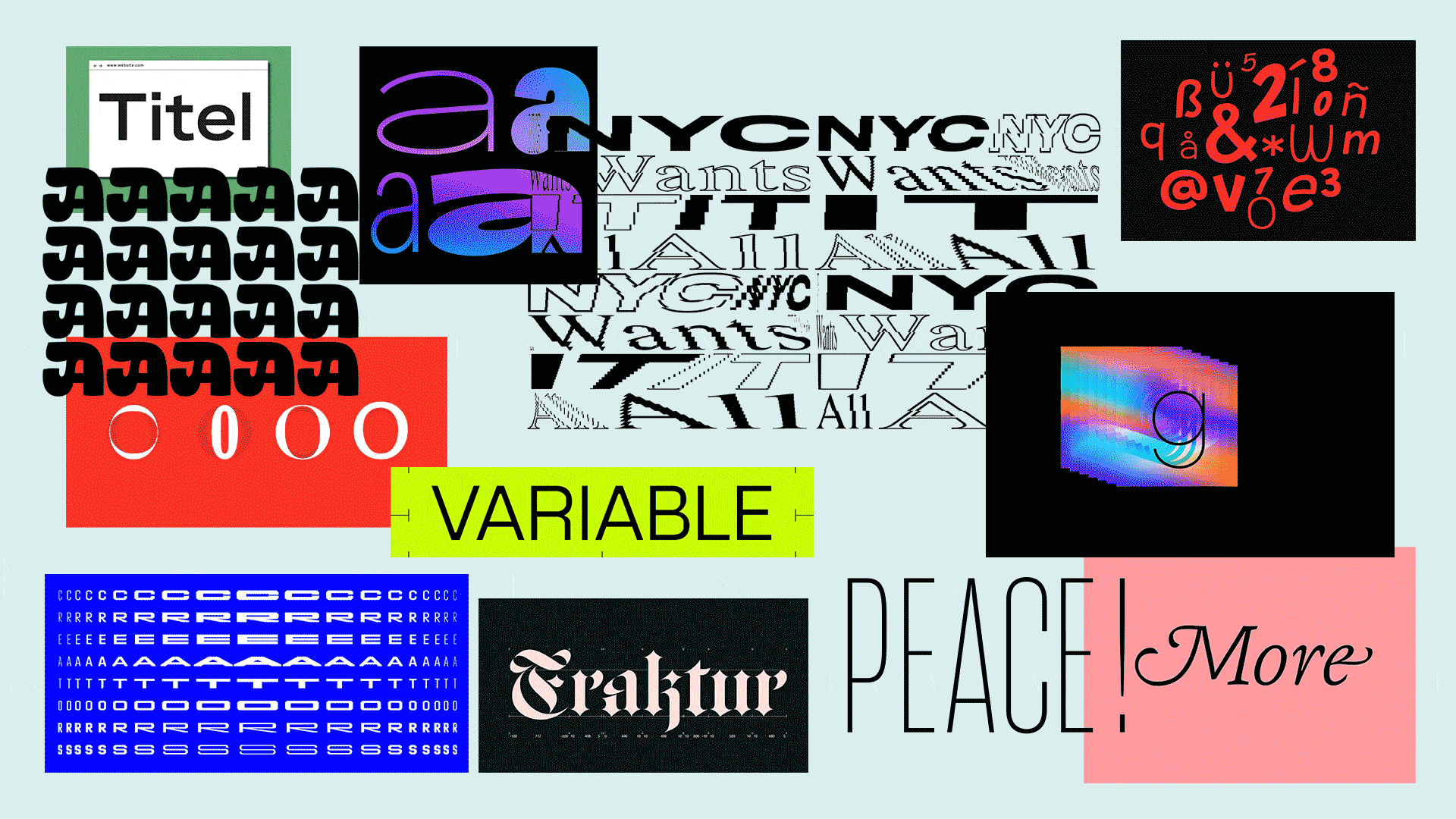It’s that time of year when we are bombarded with year-end wrap-ups and trend predictions for the year to come. So, we figured we’d get in on the fun. We predict that 2020 is going to go down as a year of influence, focusing on strong type through new iterations of centuries-old techniques and new technical optimizations of OpenType features. Check out 5 typography trends our Creative Director, Tj Cichecki predicts will be popping up in 2020.
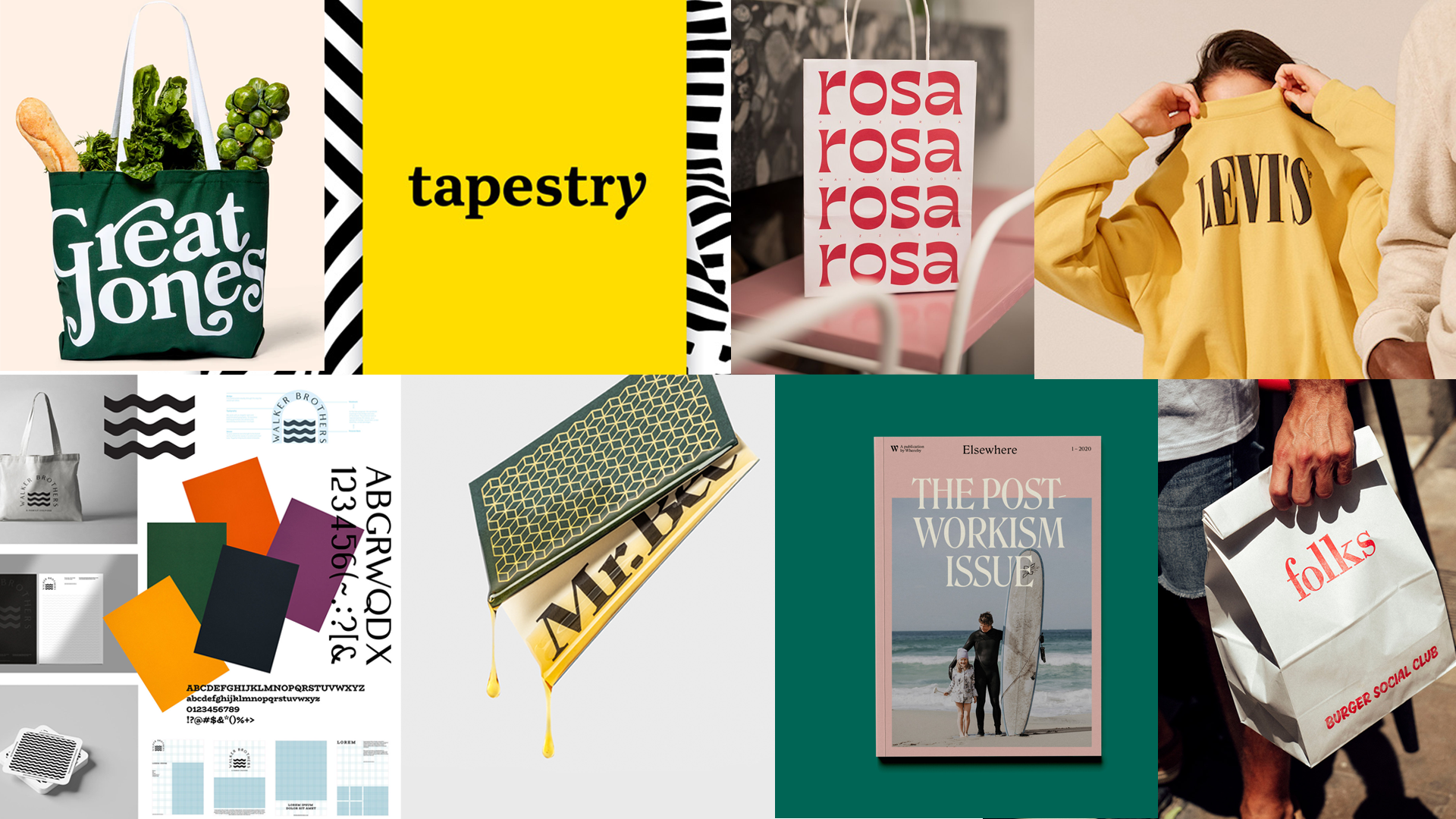
1. Use of Unique Serif Type in Logos
Over the last few years, we’ve grown pretty tired of basic geometric sans serifs and the general startup-ificiation of brand identities. For 2020, we predict the trend toward the use of unique serif typefaces will continue and we will see even more brands identities based exclusively in typography as opposed to a brand symbol, or logomark. In the next year, we’ll see a wider variety of typography, ranging from funky to functional. These unique serifs provide more visual interest and better ways to stand out from the competition.
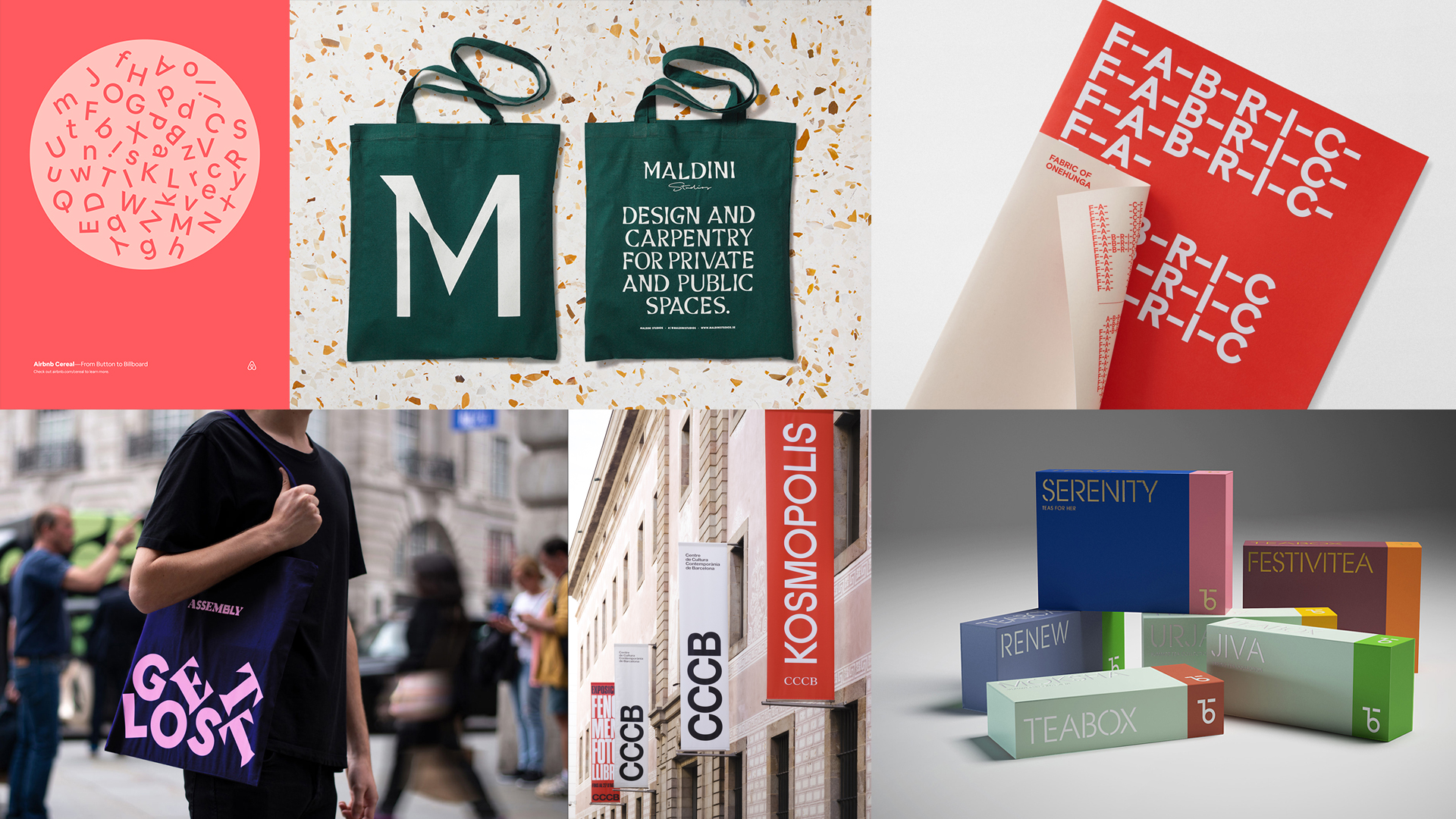
2. Bespoke Brand Typefaces
In recent years we’ve seen brands think holistically about their identity, maximizing brand through consumer touchpoints. By bringing content creation in-house and encouraging cross-team collaboration, brands are taking ownership of their identity.
A major change we’re seeing is that big brands are creating custom type systems furthering brand ownership. While the upfront expense is greater, bespoke typefaces can significantly reduce annual licensing costs and end up saving money in the long run. Plus, having your own typeface means your brand can have the flexibility to modify or expand as your organization’s identity evolves.
3. Advanced Use of Variable Type
We expect to see pretty significant advancements in Variable Type. If you’re a typographer, you’re probably already aware of the power that is variable type. The scalable OpenType font format allows a single font file to store a continuous range of design variants, essentially behaving like multiple fonts in one.
Many possibilities surround variable type and we predict we’ll see it pushed to the extreme in 2020. Aside from bringing simplicity and reduced load times, we’ll see new uses of the OpenType feature. Fonts will be able to fluidly switch between matching sans serif and serif font families in areas where there are micro-interactions in interactive design.
One of the most interesting Variable Type applications we’ve seen was published by Andrew Johnson, an interaction designer at Medium. In his article Approaching Spatially Adaptive Type, Johnson talks about the behavior and use of typography in Mixed Reality experiences. Using a variety of variable type+Mixed Reality applications, Johnson demonstrates how optically adjusting perspective can keep objects readable even with continuously changing typographic orientation.
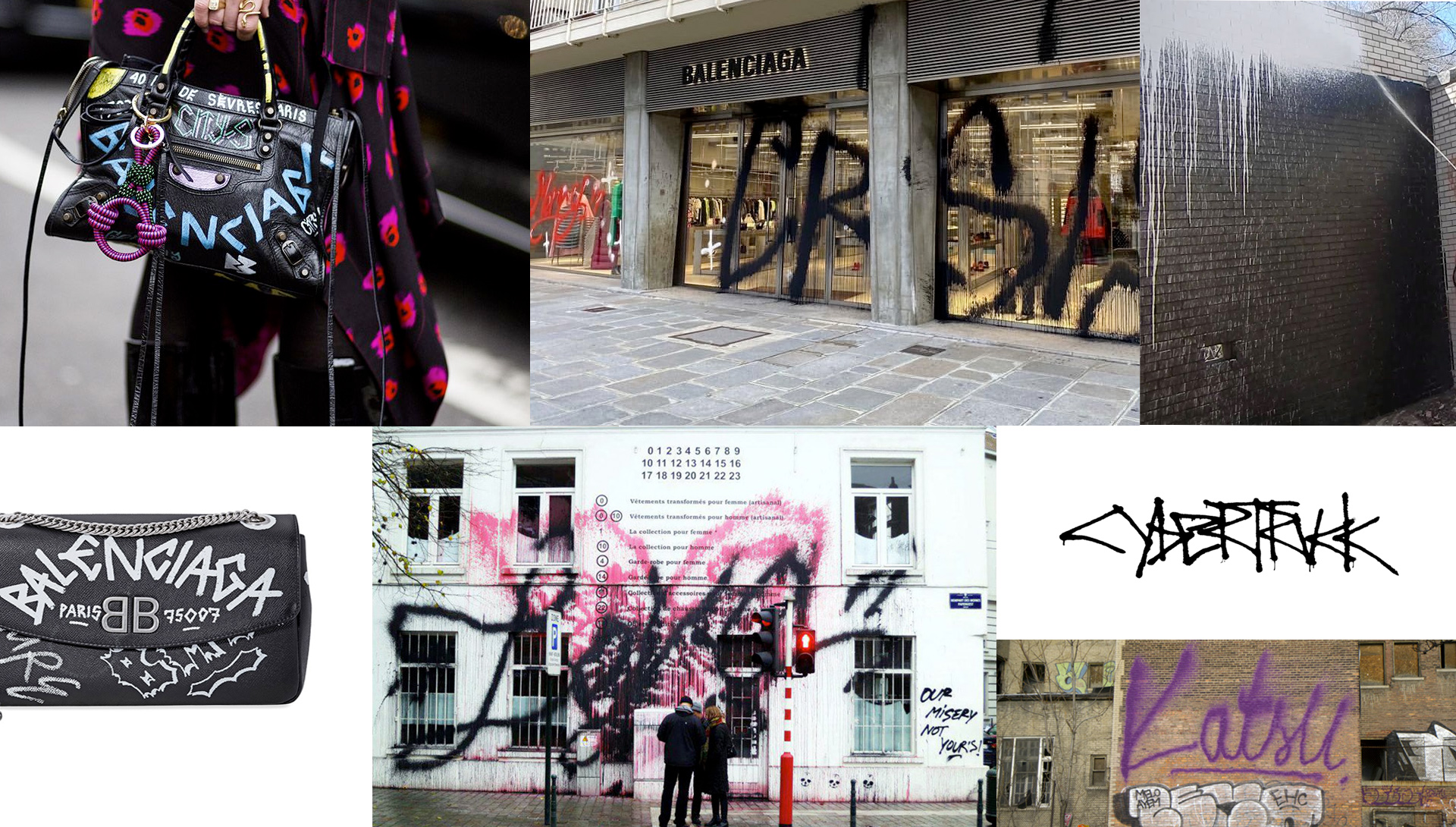
4. Appropriation of Street Style
Street style is another trend we’ve seen a lot of over the last 6 months. And we think this trend will continue well into 2020, especially in fashion and interior design. In a world that feels even more at unrest, angsty street style lettering seems to resonate, even with luxury brands.
From Tesla’s new Cyber Truck logo to Balenciaga’s Graffiti line, hand-made lettering connects with people on a personal level and brands are ready and willing to appropriate that emotional connection for commercial profit.
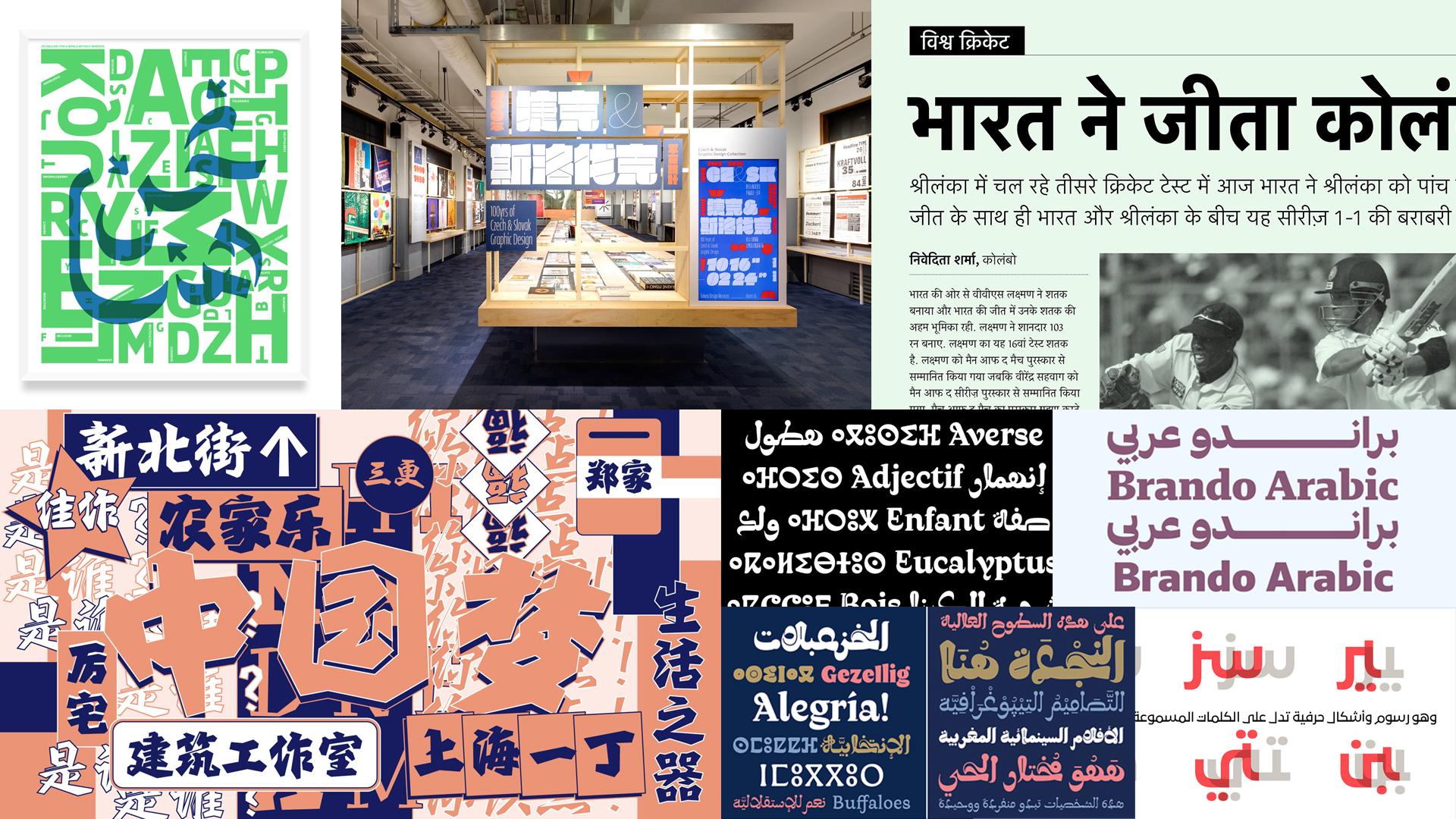
5. Globalization of Type Design
The next year and the next decade will see an explosion of type design that comes from all corners of the world. Type history has mostly been focused on the Latin character set. As our world continues to globalize, multi-language marketing and communications are more becoming common. Typographic systems will be extended to include more languages so that we can better connect with other cultures.
We’re familiar with the Latin characters but brands operating on the global scale are learning they need to speak globally (which more often than not outside the Latin character set).


